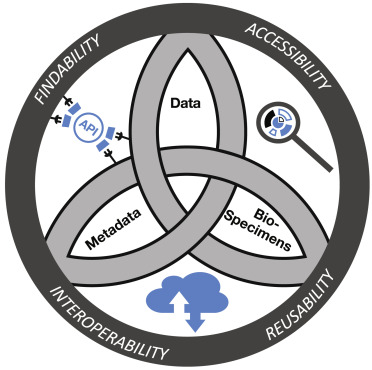30篇Cell和Cell子刊论文探究长期太空飞行对健康的影响
来源:本站原创 2020-11-29 00:31
2020年11月29日讯/生物谷BIOON/---历史性的美国宇航局双胞胎研究(NASA Twins Study,下称NASA双胞胎研究)调查了同卵双胞胎宇航员ScottKelly和Mark Kelly,并提供了在太空生活对健康影响的新信息。美国科罗拉多州立大学的Susan Bailey教授是来自12所大学的80多名科学家之一,他们对这个典型实验进行了研究;
2020年11月29日讯/生物谷BIOON/---历史性的美国宇航局双胞胎研究(NASA Twins Study,下称NASA双胞胎研究)调查了同卵双胞胎宇航员ScottKelly和Mark Kelly,并提供了在太空生活对健康影响的新信息。

美国科罗拉多州立大学的Susan Bailey教授是来自12所大学的80多名科学家之一,他们对这个典型实验进行了研究;Mark留在地球上,而Scott则在高空飞行了将近一年。这项庞大的研究工作是由美国宇航局(NASA)的人类研究计划协调的。
Bailey继续开展她的NASA研究,如今她与来自数十个学术、政府、航空航天和工业团体的200多名研究人员一起于2020年11月25日在细胞出版社(Cell Press)的五家期刊上发表了30篇科学论文。
最近在科罗拉多州立大学获得细胞与分子生物学博士学位的Jared Luxton是其中两篇论文的第一作者。他如今是美国农业部的一名数据科学家。
这一系列研究包括一篇涵盖了对太空飞行基本特征的了解的论文,代表了迄今为止产生的最大的一组关于太空生物学和宇航员健康影响的数据。
对于Bailey来说,这也是一个里程碑,标志着她多年来与NASA的合作,其中包括她在基础辐射研究中的领导作用,以及被选为NASA双胞胎研究和同时涉及宇航员的研究项目的研究员的荣誉。在此期间,她实验室的几名研究生在她的指导下获得了博士学位。
Bailey说,“我们现在有了一个可以在未来宇航员身上寻找的基础,包括端粒长度变化和DNA损伤反应。在未来,我们的目标是更好地了解潜在的机制,了解人体在长时间的太空飞行中发生什么,以及它在人与人之间的差异。不是每个人的反应都是一样的。这是有更多宇航员参与这些研究的好处之一。”
研究染色体末端,对衰老有影响
Bailey是端粒和辐射引起的DNA损伤方面的专家,在“NASA双胞胎研究”发表时,全世界都对这些研究领域产生了浓厚的兴趣。在NASA双胞胎研究中,她和她的团队已发现,在太空中时,Scott的白细胞中的端粒变长了,随后在他回到地球后又恢复到接近正常的长度。
端粒是染色体末端的保护性“帽子”,它会随着年龄的增长而缩短。端粒长度的大幅变化可能意味着一个人有加速衰老或者伴随着年龄增长而出现心血管疾病和癌症等疾病的风险。
在最新的研究中,Bailey、Luxton、高级研究助理Lynn Taylor及其研究团队研究了一组10名没有血缘关系的宇航员,包括科罗拉多州立大学校友Kjell Lindgren博士,并将这些研究结果与来自NASA双胞胎研究的结果进行了比较。他们没有获得所有机组人员在飞行中的血液和其他样本,但是Bailey说,他们每个人确实在太空飞行前后提供了血液样本。
这些研究涉及的宇航员在国际空间站的低地轨道上呆了大约6个月,而低地轨道是有一定的空间辐射保护的。尽管有保护,但是这些研究人员还是发现了DNA损伤的证据,这可能是潜在健康影响的警告信号。
氧化应激的新发现
在这些新的发现中,这些研究人员发现,太空飞行期间的慢性氧化应激导致了他们观察到的端粒延长。他们还发现,宇航员在太空飞行后的端粒普遍比飞行前短。他们还观察到了这些反应的个体差异。
为了更深入地了解这些发现,Bailey团队还研究了攀登珠穆朗玛峰(地球上的极端环境)的双胞胎登山者。不登山的双胞胎则留在海拔较低的地方,包括科罗拉多州的博尔德市。值得注意的是,他们在登山者中发现了类似的氧化应激和端粒长度变化的证据。
与Bailey合作的美国威尔康奈尔医学院副教授Christopher Mason对珠穆朗玛峰登山者进行了基因表达分析。他发现了一种不依赖端粒酶的、基于重组的端粒长度维持途径的证据,这种途径可以导致更长的端粒。
Bailey说,当慢性氧化应激发生时,它会破坏端粒。她说,“正常的血细胞正在死亡并试图生存。它们正在适应新的环境。一些细胞会激活一条替代途径,以保持其端粒的活力。这与一些肿瘤的情况类似。一些细胞从这个过程中产生。这也是我们在太空飞行中观察到的。”
Luxton说,上述机制被称为端粒替代性延长(alternative lengthening of telomeres, ALT)是一个意外的发现。他说,“你通常会在癌症或发育中胚胎内观察到这一点。”
呵护你的端粒
Bailey说,与“NASA双胞胎研究”的结论相类似,这些新发现对未来在月球上建立基地或前往火星,甚至作为太空游客的太空旅行者都有影响。长时间的探测任务将涉及到增加在地球保护之外的时间和距离。
虽然在太空中具有更长的端粒看起来似乎是一件好事,甚至可能是“青春之泉”,但是这位科学家说,她猜测这个故事的结局有些不妙。
她说,“遭受由空间辐射引起的DNA损伤(如染色体倒位)的细胞的寿命延长或永生会增加癌症风险。”
Bailey说,她的团队观察到所有船员在太空飞行期间和之后的染色体倒位频率增加。
Bailey说,“端粒确实反映了我们的生活方式--无论是在地球上还是在地球外。我们的选择确实会对我们衰老的速度或程度产生影响。呵护好你的端粒很重要。”(生物谷 Bioon.com)
参考资料:
1.Ryan T. Scott et al. Advancing the Integration of Biosciences Data Sharing to Further Enable Space Exploration. Cell Reports, 2020, doi:https://doi.org/10.1016/j.celrep.2020.108441.
2.Jamaji C. Nwanaji-Enwerem et al. A Longitudinal Epigenetic Aging and Leukocyte Analysis of Simulated Space Travel: The Mars-500 Mission. Cell Reports, 2020, doi:https://doi.org/10.1016/j.celrep.2020.108406.
3.Nuria Mencia Trinchant et al. Clonal Hematopoiesis Before, During, and After Human Spaceflight. Cell Reports, 2020, doi:https://doi.org/10.1016/j.celrep.2020.108458.
4.Eloise Pariset et al. DNA Damage Baseline Predicts Resilience to Space Radiation and Radiotherapy. Cell Reports, 2020, doi:https://doi.org/10.1016/j.celrep.2020.108434.
5.Monica L. Gertz et al. Multi-omic, Single-Cell, and Biochemical Profiles of Astronauts Guide Pharmacological Strategies for Returning to Gravity. https://doi.org/10.1016/j.celrep.2020.108429.
6.Jared J. Luxton et al. Telomere Length Dynamics and DNA Damage Responses Associated with Long-Duration Spaceflight. https://doi.org/10.1016/j.celrep.2020.108457.
7.Sherina Malkani et al. Circulating miRNA Spaceflight Signature Reveals Targets for Countermeasure Development. https://doi.org/10.1016/j.celrep.2020.108448.
8.Stanley Walls et al. Prolonged Exposure to Microgravity Reduces Cardiac Contractility and Initiates Remodeling in Drosophila. https://doi.org/10.1016/j.celrep.2020.108445.
9.Jared J. Luxton et al. Temporal Telomere and DNA Damage Responses in the Space Radiation Environment. https://doi.org/10.1016/j.celrep.2020.108435.
10.Ebrahim Afshinnekoo et al. Fundamental Biological Features of Spaceflight: Advancing the Field to Enable Deep-Space Exploration. Cell, 2020, doi:https://doi.org/10.1016/j.cell.2020.10.050.
11.Willian A. da Silveira et al. Comprehensive Multi-omics Analysis Reveals Mitochondrial Stress as a Central Biological Hub for Spaceflight Impact. Cell, 2020, doi:https://doi.org/10.1016/j.cell.2020.11.002.
12.An Extraordinary Astronaut. Cell, 2020, doi:https://doi.org/10.1016/j.cell.2020.11.026.
13.Lindsay Rutter et al. A New Era for Space Life Science: International Standards for Space Omics Processing. Patterns, 2020, doi:https://doi.org/10.1016/j.patter.2020.100148.
14.Pedro Madrigal et al. Revamping Space-omics in Europe. Cell Systems, 2020, doi:https://doi.org/10.1016/j.cels.2020.10.006.
15.San-Huei Lai Polo et al. RNAseq Analysis of Rodent Spaceflight Experiments Is Confounded by Sample Collection Techniques. iScience, 2020, doi:https://doi.org/10.1016/j.isci.2020.101733.
16.Aránzazu Manzano et al. The Importance of Earth Reference Controls in Spaceflight -Omics Research: Characterization of Nucleolin Mutants from the Seedling Growth Experiments. iScience, 2020, doi:https://doi.org/10.1016/j.isci.2020.101686.
17.Amber M. Paul et al. Beyond Low-Earth Orbit: Characterizing Immune and microRNA Differentials following Simulated Deep Spaceflight Conditions in Mice. iScience, 2020, doi:https://doi.org/10.1016/j.isci.2020.101747.
18.Daniela Bezdan et al. Cell-free DNA (cfDNA) and exosome profiling from a year-long human spaceflight reveals circulating biomarkers. iScience, 2020, doi:https://doi.org/10.1016/j.isci.2020.101844.
19.Yen-Ruh Wuu et al. LET-Dependent Low Dose and Synergistic Inhibition of Human Angiogenesis by Charged Particles: Validation of miRNAs that Drive Inhibition. iScience, 2020, doi:https://doi.org/10.1016/j.isci.2020.101771.
20.Craig R.G. Willis et al. Comparative Transcriptomics Identifies Neuronal and Metabolic Adaptations to Hypergravity and Microgravity in Caenorhabditis elegans. iScience, 2020, doi:https://doi.org/10.1016/j.isci.2020.101734.
21.Lee et al. Reference-Guided Metagenomics Reveals Genome-Level Evidence of Potential Microbial Transmission from the Iss Environment to an Astronaut's Microbiome
https://papers.ssrn.com/sol3/papers.cfm?abstract_id=3664178
22.Laranjeiro et al. Spaceflight Affects Neuronal Morphology and Alters Transcellular Degradation of Neuronal Debris in Adult Caenorhabditis elegans
https://papers.ssrn.com/sol3/papers.cfm?abstract_id=3724675
23.Grigorev et al. Haplotype Diversity and Sequence Heterogeneity of Human Telomeres
https://www.biorxiv.org/content/10.1101/2020.01.31.929307v1
24.Danko et al. Characterization of Spacesuit Associated Microbial Communities and Their Implications for NASA Missions
https://www.researchsquare.com/article/rs-70768/v1
25.Overby et al. NASA GeneLab RNA-Seq Consensus Pipeline: Standardized Processing of Short-Read RNA-Seq Data
https://biorxiv.org/cgi/content/short/2020.11.06.371724v1
26.Reed et al. Telomere length dynamics in response to DNA damage in malaria parasites
https://www.biorxiv.org/content/10.1101/2020.11.08.373563v1
27.Danko et al. Genetic Evidence for Selective Transfer of Microbes Between an Astronaut and the International Space Station
https://www.biorxiv.org/content/10.1101/2020.11.10.376954v1
28.Schmidt et al. Elevation of Gut Derived p-Cresol and its Associated Molecular Networks
https://www.biorxiv.org/content/10.1101/2020.11.10.374645v2
29.Westover et al. Engineering Radioprotective Human Cells Using the Tardigrade Damage Suppressor Protein
https://www.biorxiv.org/content/10.1101/2020.11.10.373571v1
30.Research provides new insights on health effects of long-duration space flight
https://phys.org/news/2020-11-insights-health-effects-long-duration-space.html

Cell Reports, 2020, doi:10.1016/j.celrep.2020.108441。
美国科罗拉多州立大学的Susan Bailey教授是来自12所大学的80多名科学家之一,他们对这个典型实验进行了研究;Mark留在地球上,而Scott则在高空飞行了将近一年。这项庞大的研究工作是由美国宇航局(NASA)的人类研究计划协调的。
Bailey继续开展她的NASA研究,如今她与来自数十个学术、政府、航空航天和工业团体的200多名研究人员一起于2020年11月25日在细胞出版社(Cell Press)的五家期刊上发表了30篇科学论文。
最近在科罗拉多州立大学获得细胞与分子生物学博士学位的Jared Luxton是其中两篇论文的第一作者。他如今是美国农业部的一名数据科学家。
这一系列研究包括一篇涵盖了对太空飞行基本特征的了解的论文,代表了迄今为止产生的最大的一组关于太空生物学和宇航员健康影响的数据。
对于Bailey来说,这也是一个里程碑,标志着她多年来与NASA的合作,其中包括她在基础辐射研究中的领导作用,以及被选为NASA双胞胎研究和同时涉及宇航员的研究项目的研究员的荣誉。在此期间,她实验室的几名研究生在她的指导下获得了博士学位。
Bailey说,“我们现在有了一个可以在未来宇航员身上寻找的基础,包括端粒长度变化和DNA损伤反应。在未来,我们的目标是更好地了解潜在的机制,了解人体在长时间的太空飞行中发生什么,以及它在人与人之间的差异。不是每个人的反应都是一样的。这是有更多宇航员参与这些研究的好处之一。”
研究染色体末端,对衰老有影响
Bailey是端粒和辐射引起的DNA损伤方面的专家,在“NASA双胞胎研究”发表时,全世界都对这些研究领域产生了浓厚的兴趣。在NASA双胞胎研究中,她和她的团队已发现,在太空中时,Scott的白细胞中的端粒变长了,随后在他回到地球后又恢复到接近正常的长度。
端粒是染色体末端的保护性“帽子”,它会随着年龄的增长而缩短。端粒长度的大幅变化可能意味着一个人有加速衰老或者伴随着年龄增长而出现心血管疾病和癌症等疾病的风险。
在最新的研究中,Bailey、Luxton、高级研究助理Lynn Taylor及其研究团队研究了一组10名没有血缘关系的宇航员,包括科罗拉多州立大学校友Kjell Lindgren博士,并将这些研究结果与来自NASA双胞胎研究的结果进行了比较。他们没有获得所有机组人员在飞行中的血液和其他样本,但是Bailey说,他们每个人确实在太空飞行前后提供了血液样本。
这些研究涉及的宇航员在国际空间站的低地轨道上呆了大约6个月,而低地轨道是有一定的空间辐射保护的。尽管有保护,但是这些研究人员还是发现了DNA损伤的证据,这可能是潜在健康影响的警告信号。
氧化应激的新发现
在这些新的发现中,这些研究人员发现,太空飞行期间的慢性氧化应激导致了他们观察到的端粒延长。他们还发现,宇航员在太空飞行后的端粒普遍比飞行前短。他们还观察到了这些反应的个体差异。
为了更深入地了解这些发现,Bailey团队还研究了攀登珠穆朗玛峰(地球上的极端环境)的双胞胎登山者。不登山的双胞胎则留在海拔较低的地方,包括科罗拉多州的博尔德市。值得注意的是,他们在登山者中发现了类似的氧化应激和端粒长度变化的证据。
与Bailey合作的美国威尔康奈尔医学院副教授Christopher Mason对珠穆朗玛峰登山者进行了基因表达分析。他发现了一种不依赖端粒酶的、基于重组的端粒长度维持途径的证据,这种途径可以导致更长的端粒。
Bailey说,当慢性氧化应激发生时,它会破坏端粒。她说,“正常的血细胞正在死亡并试图生存。它们正在适应新的环境。一些细胞会激活一条替代途径,以保持其端粒的活力。这与一些肿瘤的情况类似。一些细胞从这个过程中产生。这也是我们在太空飞行中观察到的。”
Luxton说,上述机制被称为端粒替代性延长(alternative lengthening of telomeres, ALT)是一个意外的发现。他说,“你通常会在癌症或发育中胚胎内观察到这一点。”
呵护你的端粒
Bailey说,与“NASA双胞胎研究”的结论相类似,这些新发现对未来在月球上建立基地或前往火星,甚至作为太空游客的太空旅行者都有影响。长时间的探测任务将涉及到增加在地球保护之外的时间和距离。
虽然在太空中具有更长的端粒看起来似乎是一件好事,甚至可能是“青春之泉”,但是这位科学家说,她猜测这个故事的结局有些不妙。
她说,“遭受由空间辐射引起的DNA损伤(如染色体倒位)的细胞的寿命延长或永生会增加癌症风险。”
Bailey说,她的团队观察到所有船员在太空飞行期间和之后的染色体倒位频率增加。
Bailey说,“端粒确实反映了我们的生活方式--无论是在地球上还是在地球外。我们的选择确实会对我们衰老的速度或程度产生影响。呵护好你的端粒很重要。”(生物谷 Bioon.com)
参考资料:
1.Ryan T. Scott et al. Advancing the Integration of Biosciences Data Sharing to Further Enable Space Exploration. Cell Reports, 2020, doi:https://doi.org/10.1016/j.celrep.2020.108441.
2.Jamaji C. Nwanaji-Enwerem et al. A Longitudinal Epigenetic Aging and Leukocyte Analysis of Simulated Space Travel: The Mars-500 Mission. Cell Reports, 2020, doi:https://doi.org/10.1016/j.celrep.2020.108406.
3.Nuria Mencia Trinchant et al. Clonal Hematopoiesis Before, During, and After Human Spaceflight. Cell Reports, 2020, doi:https://doi.org/10.1016/j.celrep.2020.108458.
4.Eloise Pariset et al. DNA Damage Baseline Predicts Resilience to Space Radiation and Radiotherapy. Cell Reports, 2020, doi:https://doi.org/10.1016/j.celrep.2020.108434.
5.Monica L. Gertz et al. Multi-omic, Single-Cell, and Biochemical Profiles of Astronauts Guide Pharmacological Strategies for Returning to Gravity. https://doi.org/10.1016/j.celrep.2020.108429.
6.Jared J. Luxton et al. Telomere Length Dynamics and DNA Damage Responses Associated with Long-Duration Spaceflight. https://doi.org/10.1016/j.celrep.2020.108457.
7.Sherina Malkani et al. Circulating miRNA Spaceflight Signature Reveals Targets for Countermeasure Development. https://doi.org/10.1016/j.celrep.2020.108448.
8.Stanley Walls et al. Prolonged Exposure to Microgravity Reduces Cardiac Contractility and Initiates Remodeling in Drosophila. https://doi.org/10.1016/j.celrep.2020.108445.
9.Jared J. Luxton et al. Temporal Telomere and DNA Damage Responses in the Space Radiation Environment. https://doi.org/10.1016/j.celrep.2020.108435.
10.Ebrahim Afshinnekoo et al. Fundamental Biological Features of Spaceflight: Advancing the Field to Enable Deep-Space Exploration. Cell, 2020, doi:https://doi.org/10.1016/j.cell.2020.10.050.
11.Willian A. da Silveira et al. Comprehensive Multi-omics Analysis Reveals Mitochondrial Stress as a Central Biological Hub for Spaceflight Impact. Cell, 2020, doi:https://doi.org/10.1016/j.cell.2020.11.002.
12.An Extraordinary Astronaut. Cell, 2020, doi:https://doi.org/10.1016/j.cell.2020.11.026.
13.Lindsay Rutter et al. A New Era for Space Life Science: International Standards for Space Omics Processing. Patterns, 2020, doi:https://doi.org/10.1016/j.patter.2020.100148.
14.Pedro Madrigal et al. Revamping Space-omics in Europe. Cell Systems, 2020, doi:https://doi.org/10.1016/j.cels.2020.10.006.
15.San-Huei Lai Polo et al. RNAseq Analysis of Rodent Spaceflight Experiments Is Confounded by Sample Collection Techniques. iScience, 2020, doi:https://doi.org/10.1016/j.isci.2020.101733.
16.Aránzazu Manzano et al. The Importance of Earth Reference Controls in Spaceflight -Omics Research: Characterization of Nucleolin Mutants from the Seedling Growth Experiments. iScience, 2020, doi:https://doi.org/10.1016/j.isci.2020.101686.
17.Amber M. Paul et al. Beyond Low-Earth Orbit: Characterizing Immune and microRNA Differentials following Simulated Deep Spaceflight Conditions in Mice. iScience, 2020, doi:https://doi.org/10.1016/j.isci.2020.101747.
18.Daniela Bezdan et al. Cell-free DNA (cfDNA) and exosome profiling from a year-long human spaceflight reveals circulating biomarkers. iScience, 2020, doi:https://doi.org/10.1016/j.isci.2020.101844.
19.Yen-Ruh Wuu et al. LET-Dependent Low Dose and Synergistic Inhibition of Human Angiogenesis by Charged Particles: Validation of miRNAs that Drive Inhibition. iScience, 2020, doi:https://doi.org/10.1016/j.isci.2020.101771.
20.Craig R.G. Willis et al. Comparative Transcriptomics Identifies Neuronal and Metabolic Adaptations to Hypergravity and Microgravity in Caenorhabditis elegans. iScience, 2020, doi:https://doi.org/10.1016/j.isci.2020.101734.
21.Lee et al. Reference-Guided Metagenomics Reveals Genome-Level Evidence of Potential Microbial Transmission from the Iss Environment to an Astronaut's Microbiome
https://papers.ssrn.com/sol3/papers.cfm?abstract_id=3664178
22.Laranjeiro et al. Spaceflight Affects Neuronal Morphology and Alters Transcellular Degradation of Neuronal Debris in Adult Caenorhabditis elegans
https://papers.ssrn.com/sol3/papers.cfm?abstract_id=3724675
23.Grigorev et al. Haplotype Diversity and Sequence Heterogeneity of Human Telomeres
https://www.biorxiv.org/content/10.1101/2020.01.31.929307v1
24.Danko et al. Characterization of Spacesuit Associated Microbial Communities and Their Implications for NASA Missions
https://www.researchsquare.com/article/rs-70768/v1
25.Overby et al. NASA GeneLab RNA-Seq Consensus Pipeline: Standardized Processing of Short-Read RNA-Seq Data
https://biorxiv.org/cgi/content/short/2020.11.06.371724v1
26.Reed et al. Telomere length dynamics in response to DNA damage in malaria parasites
https://www.biorxiv.org/content/10.1101/2020.11.08.373563v1
27.Danko et al. Genetic Evidence for Selective Transfer of Microbes Between an Astronaut and the International Space Station
https://www.biorxiv.org/content/10.1101/2020.11.10.376954v1
28.Schmidt et al. Elevation of Gut Derived p-Cresol and its Associated Molecular Networks
https://www.biorxiv.org/content/10.1101/2020.11.10.374645v2
29.Westover et al. Engineering Radioprotective Human Cells Using the Tardigrade Damage Suppressor Protein
https://www.biorxiv.org/content/10.1101/2020.11.10.373571v1
30.Research provides new insights on health effects of long-duration space flight
https://phys.org/news/2020-11-insights-health-effects-long-duration-space.html
版权声明 本网站所有注明“来源:生物谷”或“来源:bioon”的文字、图片和音视频资料,版权均属于生物谷网站所有。非经授权,任何媒体、网站或个人不得转载,否则将追究法律责任。取得书面授权转载时,须注明“来源:生物谷”。其它来源的文章系转载文章,本网所有转载文章系出于传递更多信息之目的,转载内容不代表本站立场。不希望被转载的媒体或个人可与我们联系,我们将立即进行删除处理。
87%用户都在用生物谷APP 随时阅读、评论、分享交流 请扫描二维码下载->


